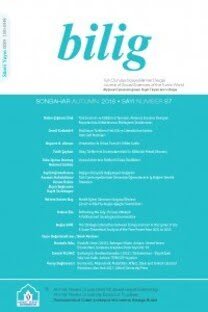I. Dünya Savaşı’nın Hong Kong’daki Son Osmanlı Tebaasına Etkileri
19. yüzyıl ortalarında İngiliz hâkimiyetine giren Hong Kong, Osmanlı Devleti’nin siyasi, askerî, coğrafi açıdan nüfuz alanında değildi. Osmanlı Devleti’nin resmen savaşa girmesiyle neredeyse aynı günlerde adanın İngiliz valisine merkezden gönderilen yazılar çerçevesinde alınan tedbirler, savaşın devamı müddetince tıpkı Alman siviller gibi adada yaşayan Osmanlı tebaasına yönelik kuşkuları ve ilan edilen “cihad-ı ekber”in muhtemel etkilerini ortadan kaldırmak üzerine kurulmuştu. Yapılan tahkikat neticesi hazırlanan rapora göre adada 27 yetişkin erkek vardı. Bunlardan beşinin eşi olduğu not edilmişti ve 27 erkekten dördünün toplam 20 çocuğu vardı. Buradan hareketle bu ilk tahkikatta erkek, kadın ve çocuk olmak üzere 52 kişi “Osmanlı” tebaası olarak listelenmişti. Kayda geçen erkeklerin isimleri ve doğum yeri kayıtlarına göre bunlardan birinin Türk ve Müslüman, birinin Suriye kökenli, ikisinin muhtemelen Rum kökenli Hristiyan olduğu anlaşılmaktadır. Listede geriye kalan 22 erkeğin Bağdat asıllı Museviler olduğu görülmektedir. Adadaki Osmanlı tebaasının genel itibariyle ticari kaygılarla buraya gelmiş ya da “rahip” olarak nitelendirilmiş oldukları tahkikattan anlaşılmaktadır. İngiltere’nin “Panislamik propaganda” algısı ile yaptığı soruşturmada listelenen Osmanlı tebaasının yukarıda sözü edilen etnik-dini dağılımına rağmen savaşın devamı müddetince gözlem altında tutulması, sınır dışı edilmesi ya da seyahatinin belirli süre engellenmiş olmasında İngiltere’nin tehdit algısının “Osmanlı pasaportu taşıyanlar” noktasında toplanmasının etkili olduğu görülmektedir
Anahtar Kelimeler:
Hong Kong, I. Dünya Savaşı, Osmanlı tebaası, milliyetçi Hintliler
The Effect of World War I on the Last Ottoman Citizens in Hong Kong
Hong Kong, which was brought under British sovereignty in the
19th century, was not under the Ottoman Empire’s political, military
and geographic influence. Shortly after the Ottoman Government
joined World War I, in an effort to counter the effects of the
recently proclaimed “holy war [jihad]”, some precautions were taken
in accordance with the orders sent by the British Government to
the British governor of the island, and the Ottoman residents fell
under suspicion just like the German civilians during the war.
However, inquiries showed that almost all of the “Ottoman” subjects
residing on the island were Jewish and Ottoman citizens who
had come to the island for trade purposes. However, those who
carried Ottoman passports were kept under strict surveillance and
deported throughout the war. The British report suggested that
there were 27 adult males, 5 married, and 4 of the 27 having a total
number of 20 children. This first investigation suggested that a total
of 52 Ottoman citizens, men, women and children were listed
in Hong Kong. The list indicated that one out of 27 males was of
Turkish and Muslim origin, another of Syrian origin, two possibly
of a Greek Christian background while the rest of the 22 males
were Baghdadi Jews. The investigation indicated that the Ottoman
population of Hong Kong was most likely present there for trade
or religious purposes. Despite the ethno-religious demographic
breakdown of the Ottomans, which was suggested by the British
report prepared with the preception of an Ottoman ‘Panislamic
propaganda’, Great Britain’s traditional perception of threat regarding
‘individuals carrying Ottoman Citizenship’ was a major motivation
behind keeping the Ottomans under observation throughout
the war, banning their right to travel for a certain period of
time and deporting them out of the country.
- ISSN: 1301-0549
- Yayın Aralığı: Yılda 4 Sayı
- Başlangıç: 1996
- Yayıncı: Ahmet Yesevi Üniversitesi
Sayıdaki Diğer Makaleler
I. Dünya Savaşı’nın Hong Kong’daki Son Osmanlı Tebaasına Etkileri
İşsizlik Histerisinin Sektörel Bir Analizi: Türkiye Örneği
Mehmet Çınar, Hülya Kanalıcı Akay, Feridun Yılmaz
Türkiye Türkçesi Söz Varlığında Fiillerin Derlem Denetimi ve Derlem Tabanlı Sözlüğü
Bayındır Tahtacıları ve Dillerinin Belirgin Özellikleri
Uygur Diasporasının Dijital Ortamdaki Faaliyetleri: Kimlik ve Anavatan Meselesi
Türkiye ile Orta Asya Türk Cumhuriyetleri Arasındaki Psikolojik Mesafe
Selay Ilgaz Sümer, M. Mithat Üner
Kültürel Değişme ve Teknolojinin Etkisiyle Şekillenen Günümüz Ninnileri ve Ninni Dinletme Geleneği
Makedonya Sorunu ve Avrupa Müdahalesi (1902-1905)
Osmanlı - Sicilyateyn Ticari İlişkilerinin Yasal Temelleri
